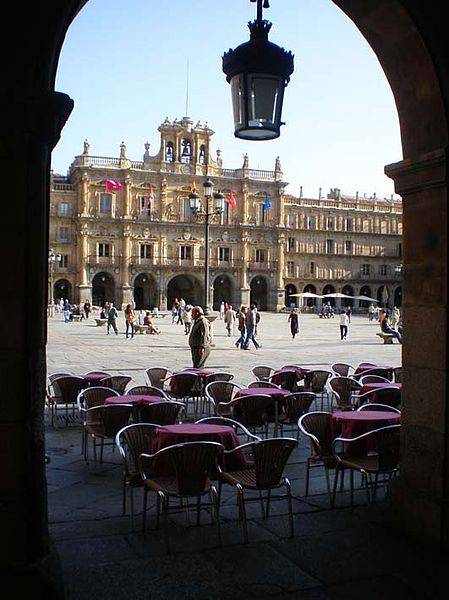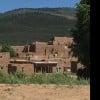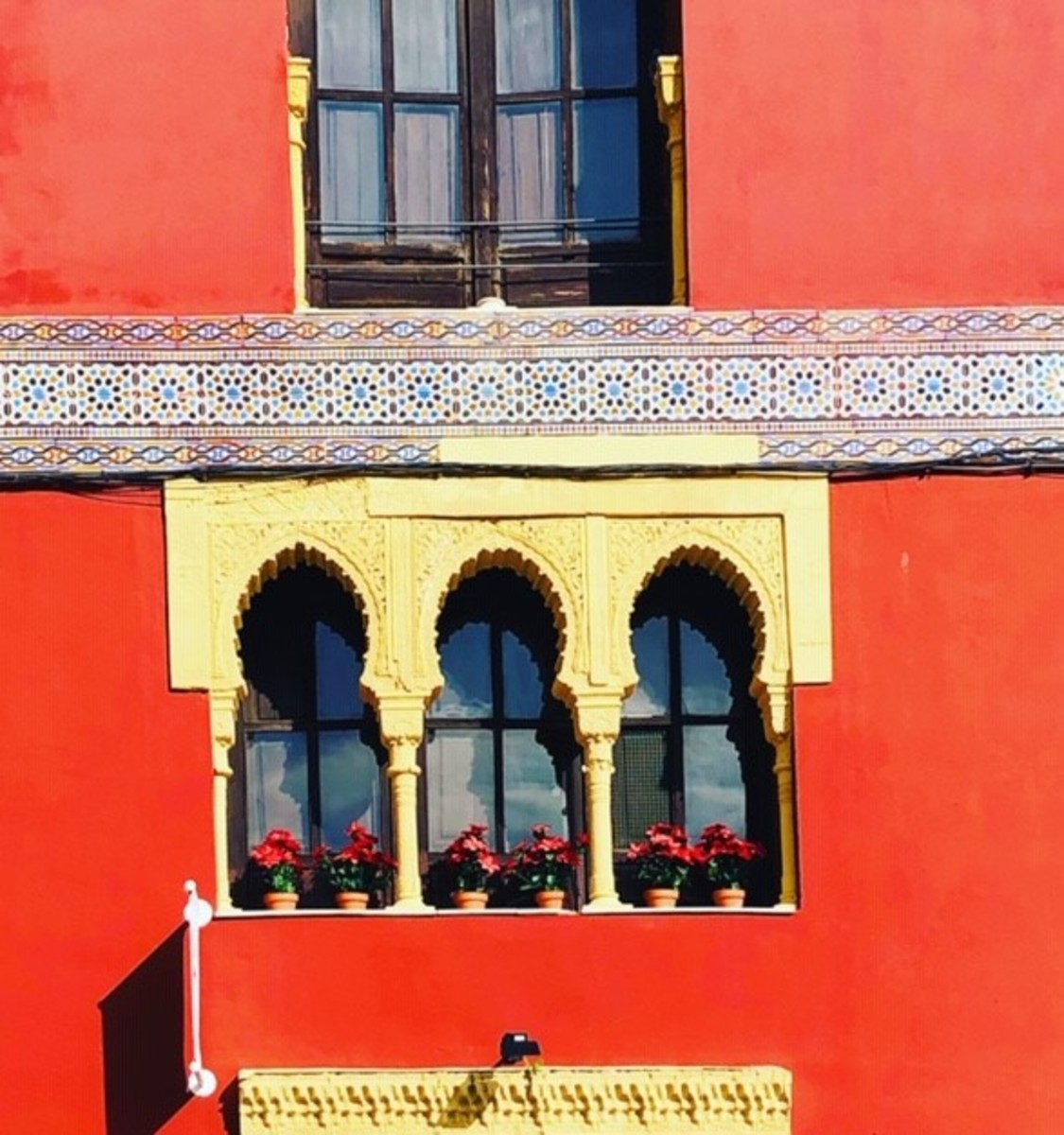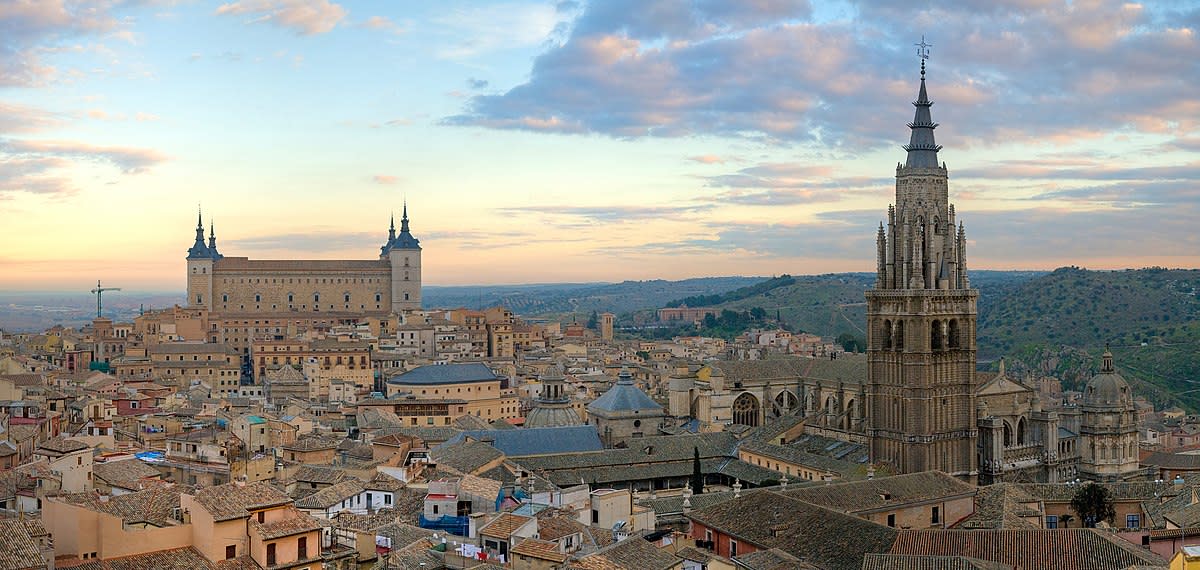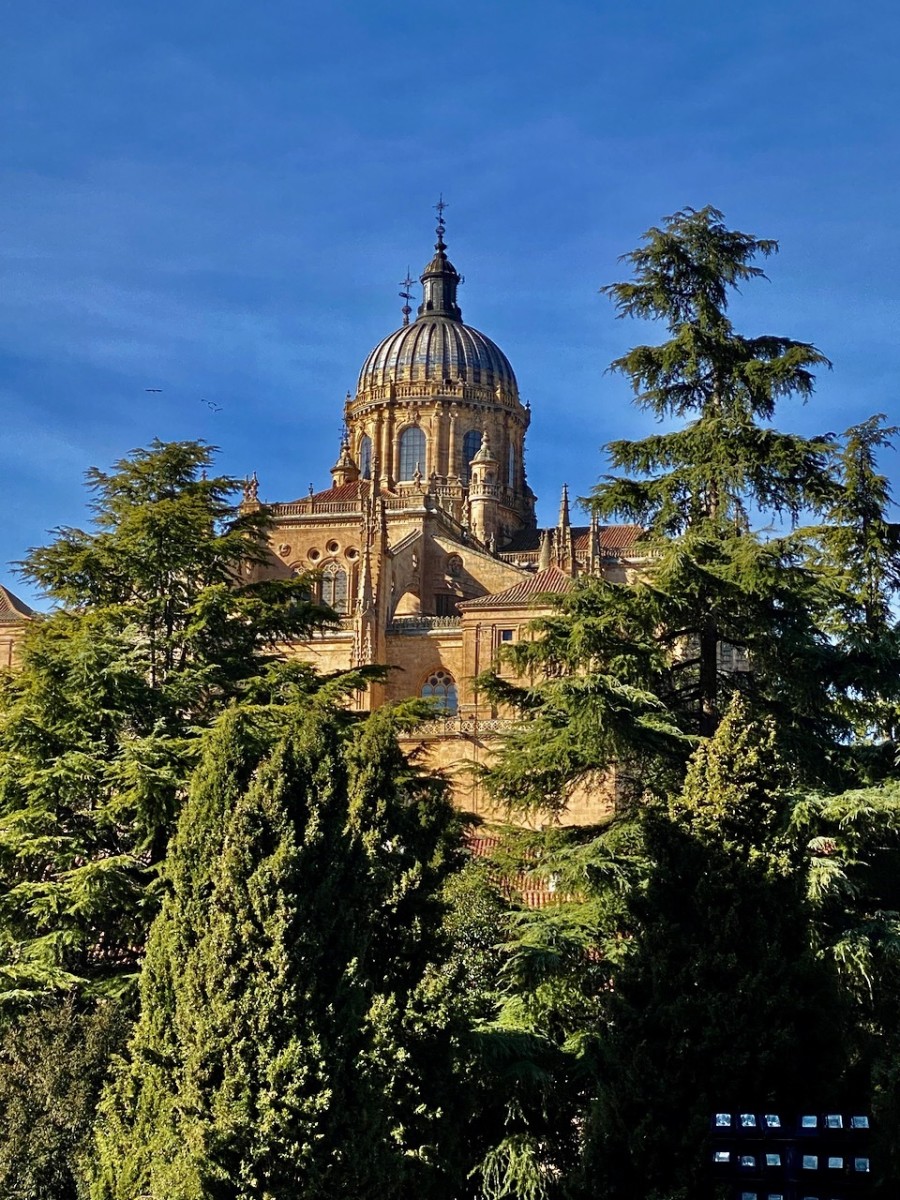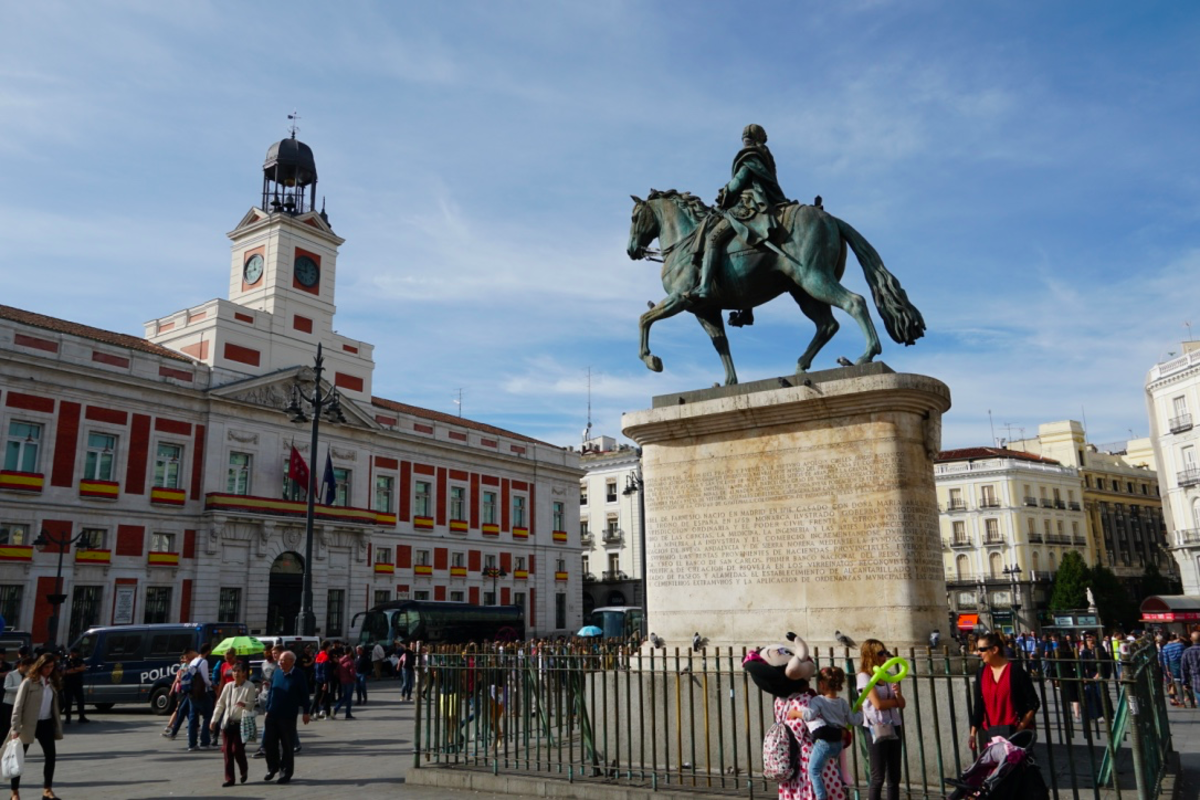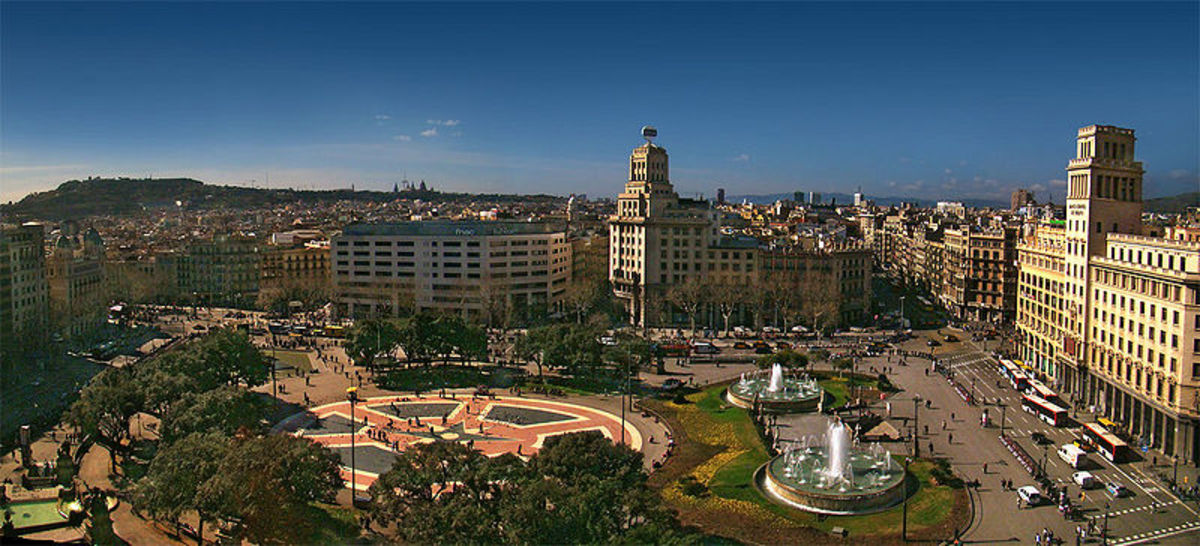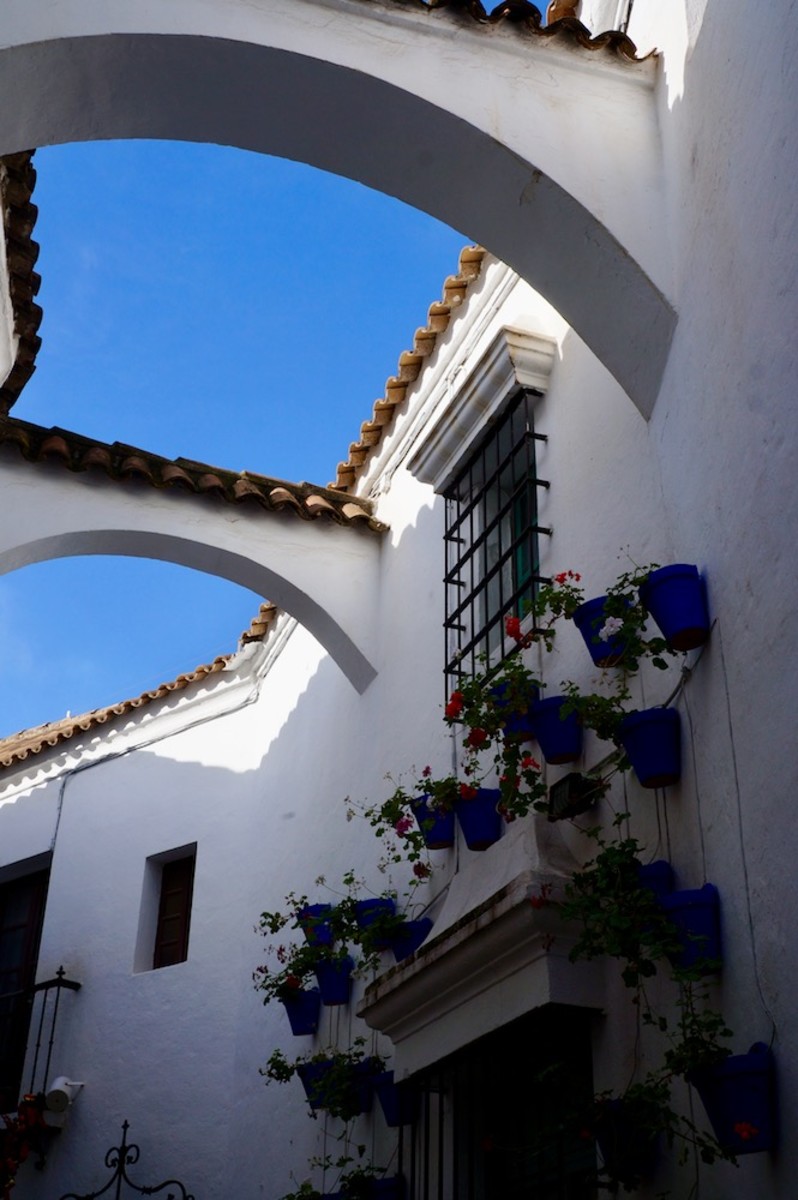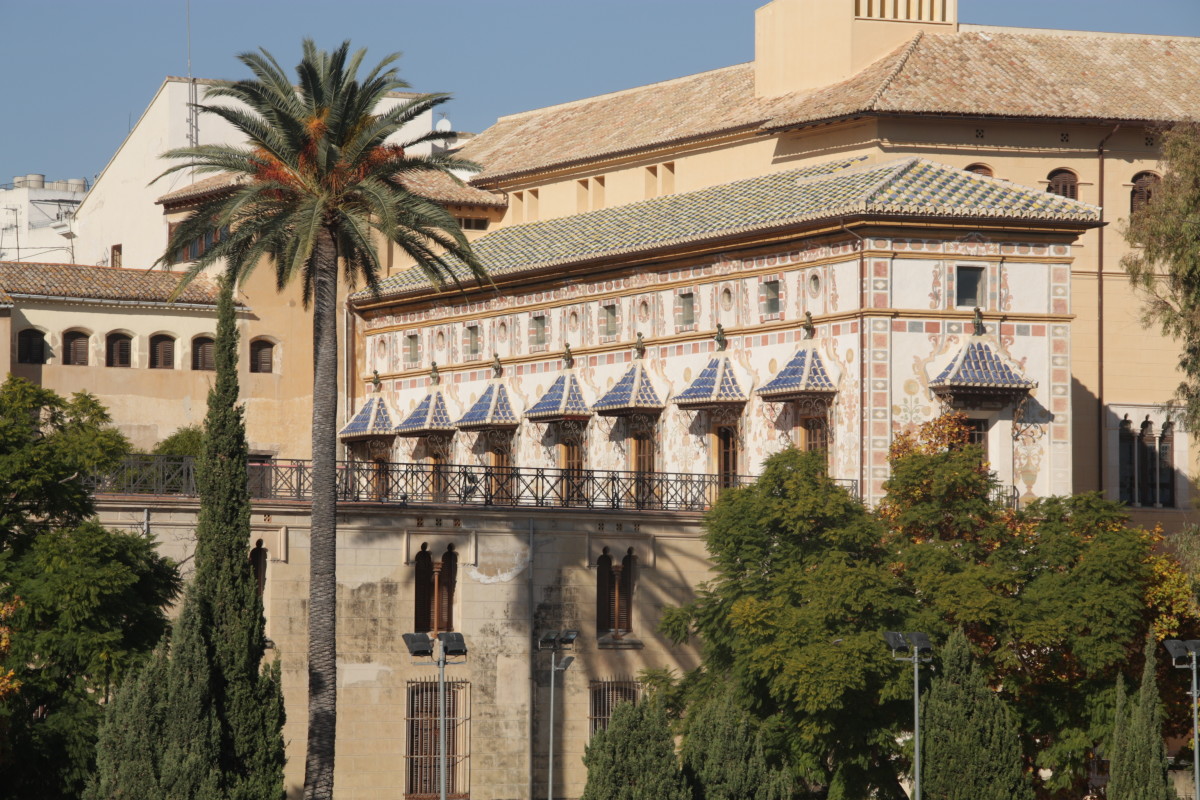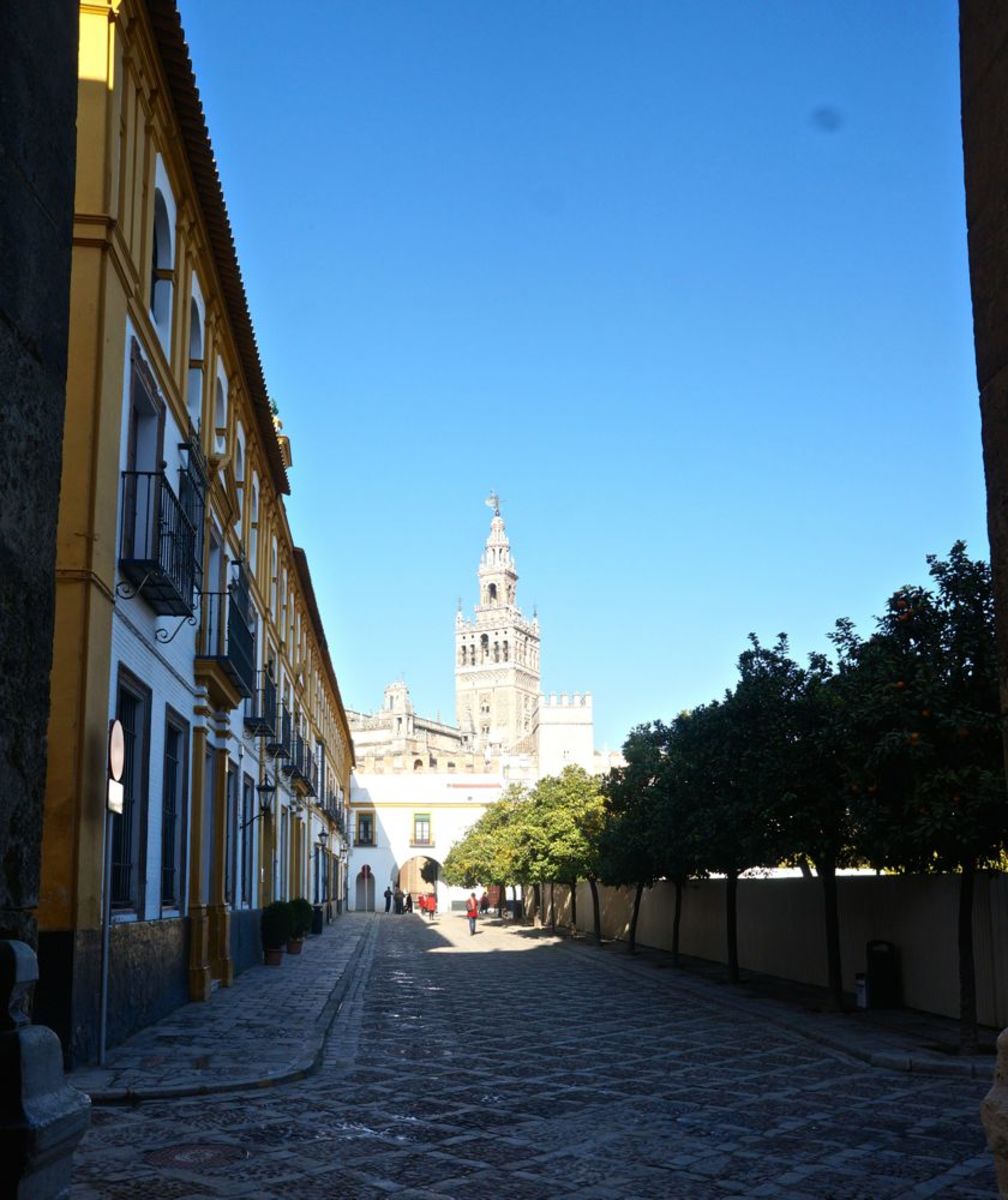Salamanca, Spain - a beautiful university city in the Castilla and Leon region of Spain.
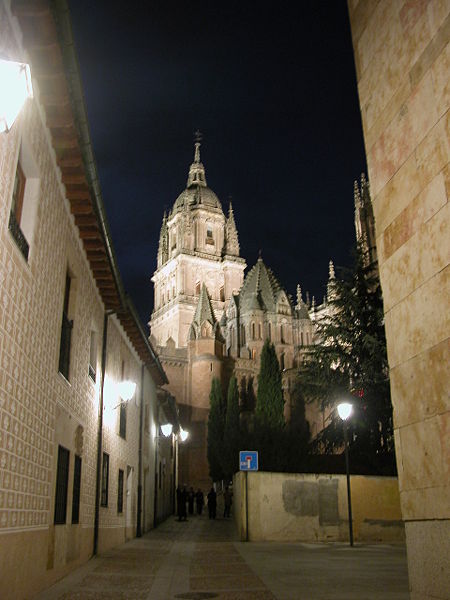
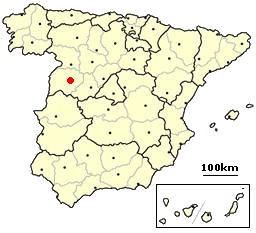
- Spanish Lessons - A fiction short story
A young American student takes a Spanish art history course at the University of Salamanca in Spain and learns more than Spanish Art.
Spanish Lessons
Although I wrote the short story, Spanish Lessons, the story is completely fiction, but the setting of the story is true. The story is set in Salamanca, Spain, and I really did attend summer Spanish classes there in 1986, when I attended the University of Salamanca and I lived with a Spanish family for about four months. It was such a wonderful experience and there is so much history, art, culture and architecture in the city that it is one you should NOT miss when you visit Spain. Once you are in Madrid, the capital city, it is only about 200 km west of the capital city, located in the region of Castille and Leon. You can easily drive a car there or take the train, which is about a three hour trip. Once in the city, you are in one of the oldest and most prestigious university cities in all of Europe.
This is why I traveled to Salamanca in 1986. I wanted to study Spanish at the University of Salamanca, because of the region it is in Castilla and Leon, and because its greatest core and contribution to education today is in the teaching of the Spanish language. Some of the greatest minds in Europe and Spain had studied there also. I would find their names among the graffiti written on the walls of the university. Names like, Miguel Cervantes de Saavedra, Christopher Columbus, Hernan Cortez, Francisco Vasquez de Coronado, Ignatius Loyola, St. John of the Cross, Mateo Aleman, and Miguel de Unamuno were some of the former students at the University of Salamanca. Did I say graffiti? Yes I did. Back in the 16th and 17th centuries these former students literally left their marks and names on the university buildings. They are still there today. And, no, I did no add mine to the buildings, as I would never be so presumptuous as to list my name among theirs.
I took Spanish grammar and Spanish conversation classes from 9 am to 12 pm Monday through Friday for eight weeks. It was an incredible experience, although, no, I did not have a handsome, Spanish god professor that summer nor did I take a Spanish art history course. Afternoons were spent studying or taking Spanish singing lessons and flamenco dancing lessons. I was immersed in Spanish language and culture for my entire time there. No English was spoken in our classes as everything was said and done in Spanish. So when I entered the University of Salamanca, I entered into a completely Spanish world. And what a world it was!
Singing lessons were learning how to sing the songs of the Spanish tunas, from the 15th, 16th, and 17th centuries. Tunas are not fish, but singing fraternaties (only men were formally educated in those centuries in Spain) that sang at the university, roamed around the city of Salamanca singing, and sang in competition with tunas from other Spanish universities. Fortunately, the university now allows women to learn the songs of the tunas, but even today, the formal tunas of the Spanish universities are still all male. It's a macho thing in Spain.
Learning to dance flamenco was fascinating for me. Every gesture means something and even the placement of fingers have a meaning. I learned to snap my Spanish fan the correct way and to use it and my eyes to entice the males in the audience. Flamenco has a lot of music and dance movements that originally derived from the gypsies, who still live in Salamanca today. Gitanos, as the gypsies are called in Spain, are still discriminated against, and live in the worst parts of the city, down near the old walls of the city and the Puente Romano, the old Roman bridge, which I will get to in a little bit. Of course, I was in heaven having singing and dancing lessons as part of my Spanish lessons, and they were the most fun classes I took that summer. Even today, Spanish and Latina music is my favorite type of music to dance to.
The University of Salamanca was founded in 1218 and is the oldest university in Spain and the third oldest university in all of Europe. It has a population of approximately 30,000 students today, and offers a very diverse, multicultural student body as many international students study there each year. The universitiy's greatest contribution is to the teaching of the Spanish language and only Castillan Spanish is taught there. The university and tourism make up the entire economy of the city.
In the 16th century, the University of Salamanca had as students the most important intellectuals of the time. They were mostly dominican scholars (religious) who designated the School of Salamanca. The juridical doctrine of the School of Salamanca ended the medieval concept of law, and founded the fundamental body of the European law and morality concepts:
- rights as a corporeal being (right to life)
- economic rights (to own property)
- spiritual rights (freedom of thought and to human dignity)
These rights, established all over Europe eventually, were begun at the University of Salamanca. I know, it is a contradiction because of the way they treat the gypsies in their city. The Spanish view the gypsies as outsiders and not Spanish in any way. Yet, Spain has incorporated the gypsy culture in their music and dancing; a contradiction in terms.
Studying in Salamanca was a really fun experience, because the professors took us on excursions (field trips) every weekend. We visited and toured the cities of Leon and Valladolid and learned the history, architecture and art of those cities. We also spent a weekend in the mountains in a tiny town called Alberca, where the cows, pigs and goats ran freely around the town and surrounding areas. In 1986, this was a town still living by 19th century standards, and many homes had no water, electricity or bathrooms with toilets. The people were still using "back houses." But, the people were so friendly and the artisans beyond belief. It was such fun to attend an entirely Spanish university and to be immersed in the Spanish life and culture.
La Universidad de Salamanca - 1218 - original buildings
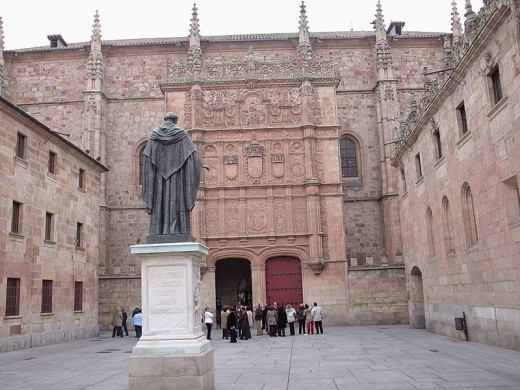
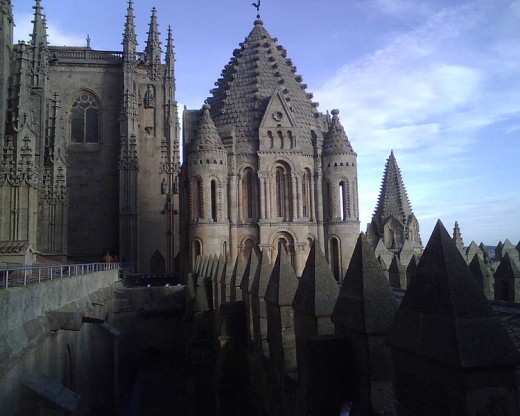
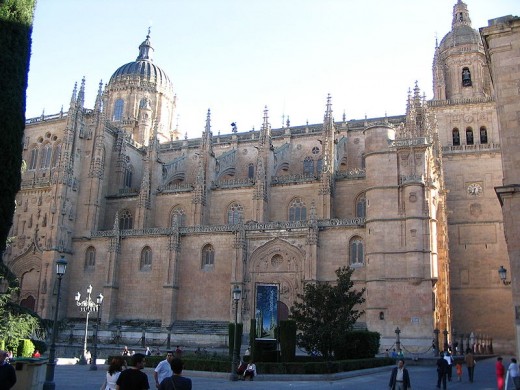
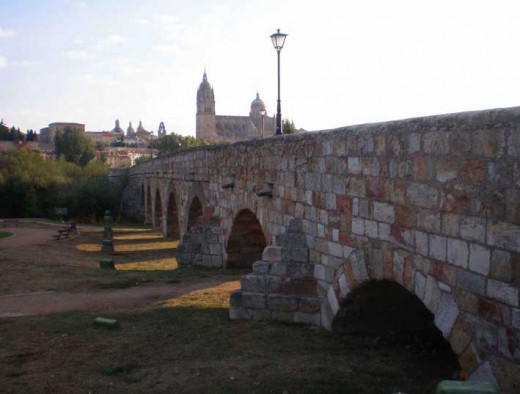
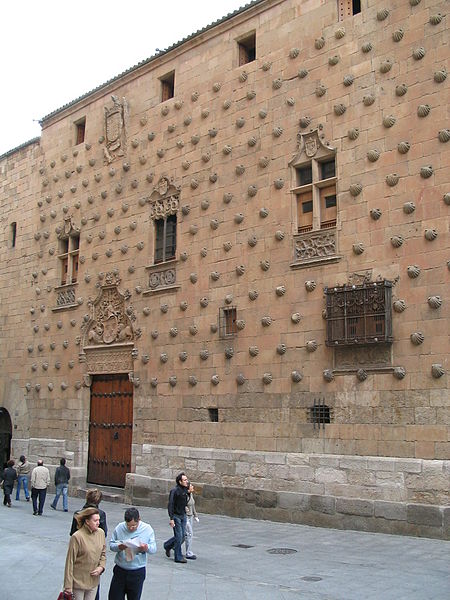
Other Salamanca Sights
Besides the university, there are many other sights to see in and around Salamanca. This city is filled with Spanish history, culture and architecture. The next two important places to see are the Old Cathedral of Salamanca, built in the 12th century in the Romanesque style with the lovely arches. The New Cathedral of Salamanca, built between the 16th and 18th centuries and in the Gothic and Baroque styles, with the large, tall spires and the gargoyles. What is unusual about these cathedrals is that part of the new cathedral was built on top of the old cathedral. To see the church sanctuary in the old cathedral you must walk down a steep flight of stone steps. You think you are descending into a dungeon, but come out into a beautiful, candle-lit room that housed the altar and church sanctuary. It is beautiful and simple in the Romanesque style. The new cathedral is magnificent in its gothic style with extremely high painted ceilings. The gold altar is breathtaking and the painted art in this cathedral is exquisitely Baroque. Outside, where the two cathedrals come together is the Patio Chico, one of the most charming corners of the city.
Next, you don't want to miss the Plaza Mayor, of Salamanca. It means the main square of the city which is very large, and literally the "meeting place" for the entire city. In the evenings most of the population gathers here to chat with friends and family. There are about twenty cafes and restaurants around the perimeter of the plaza the there are many fine shops under the arches. Here, everyone meets to have a cafe con leche (coffee with steamed milk) or vino blanco or tinto. (white or red wine.) After classes each day, my classmates and I gathered here in the plaza for a small tapas (appetiser) before returning home for la cena. (the main meal of the day).
The Plaza Mayor was built in the Baroque style by the architects Alberto and Nicolas Churriguera. It was built in the heart of the city and is considered by the Spanish to be the most beautiful Plaza Mayor in all of Spain. Having traveled throughout most of Spain, I would have to agree with their assessment. When it was originally built in the 18th century the plaza was also used for the bullfights every Sunday. There are apartments originally built above the square that housed many of the spectators for the bullfights. Today, those apartments are the muncipal government buildings for the city and the region.
Today, bullfights are fought at the bull ring at the opposite side of the city. Bullfighting is very strong in the city of Salamanca and the novellas (novices) and profesionales (professionals) fight there every weekend, usually Friday, Saturday and Sunday evenings. It is fun to hear the roar of "Ole" coming from the bull ring in the evenings. The area and land surrounding Salamanca is good bull breeding and herding country. The ferocity of the bulls is quite admired in this area of Spain, and it is an honor when a bull breeder's bull is chosen for the bullfight. Also, nearby, is a bullfighting school. I attended a demonstration bullfight at the school when I took classes in Salamanca. One afternoon my culture class took a "field trip" and watched the young boys (ages 14 and 15) as the beginning stages of learning to be matadores, fight baby bulls in the small school bullright. That was such an interesting experience, to see these boys who had decided to dedicate their lives to the passion of bullfighting, learning the footwork and cape swings necessary to fight the bull. What I liked about this is they weren't killing these baby bulls. It was all about style and substance of fighting the bull, but not killing the bull at this time. Yes, I have attended real professional bullfights and the bull is killed in the end. It is gruesome to watch and not something to take lightly. But, the macho attitude in Spain and the culture makes it easier for the Spanish to watch this than me. Today, Spain and the Spanish are having an internal debate about whether to continue with bullfighting as a national pasttime. Cruelty to animals has become important in their culture today, and this centuries old cultural pasttime may go by the wayside soon.
Many of the homes of the past wealthy aristocrats are on display in Salamanca, and many were built in the 16th, 17th, and 18th centuries. They have been preserved both outside and inside from the era they were lived in. Any one of these houses is beautiful to see, but my favorite is the Casa de Conchas (the House of Shells). The outside of the house is covered with stone carved scalloped shells and was a palace of a prince in former times. The inside is lovely baroque design and architecture, and I recommend it as place to visit and see. It is easily accessible right off the Plaza Mayor.
A trip to Salamanca would not be complete without a walk across the Puente Romano (the Roman Bridge)Take a walk across this original bridge, built in 1 AD by the Romans when they inhabited what was then called Hispania. This stone bridge was built with large stone blocks and perfectly fitted together and is still standing today without benefit or needing concrete to hold the stones together. It is a masterpiece of Roman architecture and construction. The bridge is located outside the city walls and once crossed, offers beautiful areas to have a picnic lunch of an egg and potato omlette called a tortilla espanola or tortilla de patatas.
There are more churches, convents and monasteries to see within the city of Salamanca. There are approximately sixteen different museums, one of the most interesting being the Bullfighting Museum, which covers a lot of the bullfighting history in Spain. One more note to mention is the Archive of the Spanish Civil War. In 1996 Salamanca, Spain was designated the site of all the records of the Spanish Civil War (1936-39). Here is the history of one of the most devastating wars in Spain's entire history. It lead to the autocratic rule of Francisco Franco from 1939 to 1975, when he died, and Spain began a rebirth as a social democracy.
And, because of the large student population in the city, Salamanca has a thriving night life. Today, there are many nightclubs and discos (yes, still popular in Europe) open to the wee hours of the night. Here students gather to drink, dance and converse with their friends and the locals. During the summer it is not unusual for many young people stay up all night, not returning to home and bed until five or six o'clock in the morning. In the Spanish culture, the evening meal is not eaten until ten or eleven o'clock p.m. and then the night life begins, literally at midnight! It is difficullt to live this life when taking classes in the summer, so my nights were early nights; I was usually in bed by one or two o'clock a.m. I was younger then and could keep those hours. Today, I'd never make it.
If you have an opportunity to see Salamanca or study there. Do so. When I would take students to Spain in the summer, I would always try to pick a tour that went to Salamanca. And, one of my students followed in my footsteps by studying at the University of Salamanca for a semester during her college years. Today, she has a degree in Spanish and International Relations, but is presently living and working in Italy. She has also learned Italian along the way. I am so proud and happy for her. International study certainly opens many doors for students and I highly recommend it.
